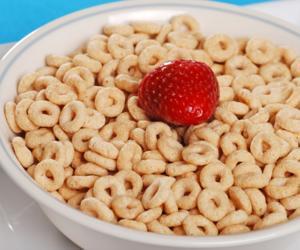Fast Food Chain Offers Gluten-Free Substitute

“Chick-Fil-A, Wallingford, CT” by Mike Mozart
There is a certain fast food restaurant in the United States that serves a sandwich featuring a gluten-free bun for celiac disease sufferers. Chick-fil-A, headquartered in Atlanta, Georgia in the United States, declared that they would be adding this sandwich to the menu. The newest bun is made from quinoa and amaranth, loaded with raisins, molasses, and cornmeal on top. As a matter of fact, last year it was tested in three different cities in the United States. Right now, you can purchase this gluten-free sandwich from all stores.
According to Leslie Nesage, the senior consultant of Chik-fil-A’s menu development, the bun’s texture isn’t too heavy. It can be compared to a muffin, springy and soft but not too dry and crumbly. It’s delicious and won’t require toasting anymore. Anyone can order this bun along with grilled chicken, because the fried chicken is not an option since it has bread crumbs.
However, it’s quite different when you order their gluten-free dish. They usually come pre-packaged, and you’ll be the one to assemble your food. They’ve decided to do it this with their desire to avoid accidental contamination since most kitchens in Chick-fil-A aren’t gluten-free. Don’t freak out, because none of the ingredients in the sandwich contain gluten. However, its cost is a bit pricey - roughly $1.15 more than your ordinary sandwich.
What Is the Deal with Gluten?
Gluten is a type of protein molecule typically found in most cereal, bread or grain. Most of the kinds of bread have this sort of protein. The exemption of gluten in the food rule are grains such as corn, rice, buckwheat, amaranth, millet, soybeans, oat and at the same time, sunflower seeds. Products or bread crafted from these grains have no gluten.
Is it Good Stuff?
Most people don't say that gluten is good stuff, but gluten can be good stuff since it makes bread elastic and chewy. A bread devoid of gluten is not chewy in the manner that the bread should ideally be. Whenever the gluten is taken away, the dough of the bread turns out to be thick and sticky and creates the bread that is hard and dense. Gluten presents protein, nutrients, and at the same time, the “rising” capability of the bread itself. Gluten also happens to be firm when it cooks, and whenever mixed with starch, it provides the bread its conventional “bread shape” that we like and love. Bread lacking gluten is just unadorned. Another addition in gluten’s edge is its capability to absorb. Sopping up pasta or gravy sauce along with gluten-free bread is not likely, since gluten absorbs liquid better. This is why it is commonly present in most meats alternative products; this is to copy the absorbent feature of the meat.
Is Gluten Bad for Everyone?
Not at all. An individual who desires to get rid of gluten from his or her diet is usually one of the following – either they are allergic to it (known as Celiac disease as mentioned above) or for the reason that they believe it will direct to health issues. Allegedly, problems can take place in the digestive system, anything from gas to intestinal ulcers, diarrhea, and bloat.
In fact, according to the National Diabetes and Digestive and Kidney Disease, celiac disease is a serious autoimmune disease which can cause long term digestive issues and may prevent your body from getting enough nutrients it requires. It can also significantly affect your body beyond your intestine. More than that, here are more details that you need to know about this disease:
- Its symptoms differ widely. This disease can be too daunting to parse since it’s not just the gluten insensitivity (called also as GI) which crops up. Some individuals suffer too much from abdominal pain or sometimes, forced to make emergency trips to their bathroom after they ate bread. With that, better talk to a specialist once you experience these symptoms:
- Constipation
- Diarrhea
- Bloating
- Bowel problems after eating wheat, barley, and rye
- Unexplained fatigue
- Unexplained anemia
- Depression or infertility
- Unexplained neurological problems
- Children who experience this condition often come with the usual GI symptoms such as abdominal pain or diarrhea, unlike adults. As per Celiac Disease Foundation, approximately one-third of the adult population that has celiac disease suffers from diarrhea. Approximately 2.5 million of Americans have celiac disease, yet they aren’t diagnosed.
- Celiac disease isn’t food intolerance or a food allergy. This is an autoimmune disease that makes the lymphocytes (white blood cells), as well as the antibodies, protect the body against the foreign objects such as viruses, germs, and bacteria. In autoimmune disease, our immune system mistakenly considers some parts of your body as foreign which result to this disease including thyroid disorders, rheumatoid arthritis, and type 1 diabetes.
Moreover, this disease can lead to some health problems like osteoporosis and malnutrition. The abnormal response of the immune system to the gluten can cause damage to small bowels when the finger-like, tiny lining project of the bowel, called “villi,” become flattened and inflamed. This event is called villous atrophy, and this reduces the surface area available in the bowel to absorb the food nutrients.
Who Can Be Affected?
Celiac disease can affect people of all gender and ages, but this is a genetic predisposition, which only means you are born with the disease in order for it to develop. There are some important triggering factors for the disease to develop like the environment, and this can happen from infancy to adulthood at any age. This disease is a serious medical condition that can affect the whole lives of the affected people. That is why it is very important to be diagnosed properly with a specialized celiac disease doctor in order to avoid its symptoms at the early stages of their lives. Celiac disease is a significant cause of gluten intolerance or gluten sensitivity.
If you think that you might have this kind of disease, do not suddenly decide to stop eating gluten contained foods until after the end of your diagnosis as it will make the test results unreliable. The diagnosis requires tiny bowel biopsy and blood tests that will be collected by your doctor. This disease can’t be cured but can be managed and controlled with a lifelong, strict gluten-free diet. If this disease is not properly controlled, it can lead to moving serious complications such as teeth problems, depression, severe malnutrition, infertility, and osteoporosis. However, with early treatment and diagnosis of celiac disease, it can significantly reduce the risk of most ever occurring complications.
Can I Avoid Gluten Forever?
The simplest way to get rid of the protein is not to consume foods that have it or to consume very few of it. Unluckily, even the few of the “gluten-free” foods are sullied since of the process they are developed and grown. It is likely to eliminate nearly all of the protein from wheat flour; this progression generates wheat starch instead of wheat flour. In addition, the wheat starch is usually gluten-free.
To be proclaimed gluten-free, the FDA needs just a “majority” of protein in the matter to be eliminated. Thus, gluten-free bread could have only a few of gluten in it, but it is already sufficient to trigger someone with the disease to get a bad reaction. Gluten is an essential part of countless individual’s nutrition; however, it may bring about digestive problems for some. If you notice you have a certain problem with gluten, consult your doctor right away to settle on testing and the right course of medication.















